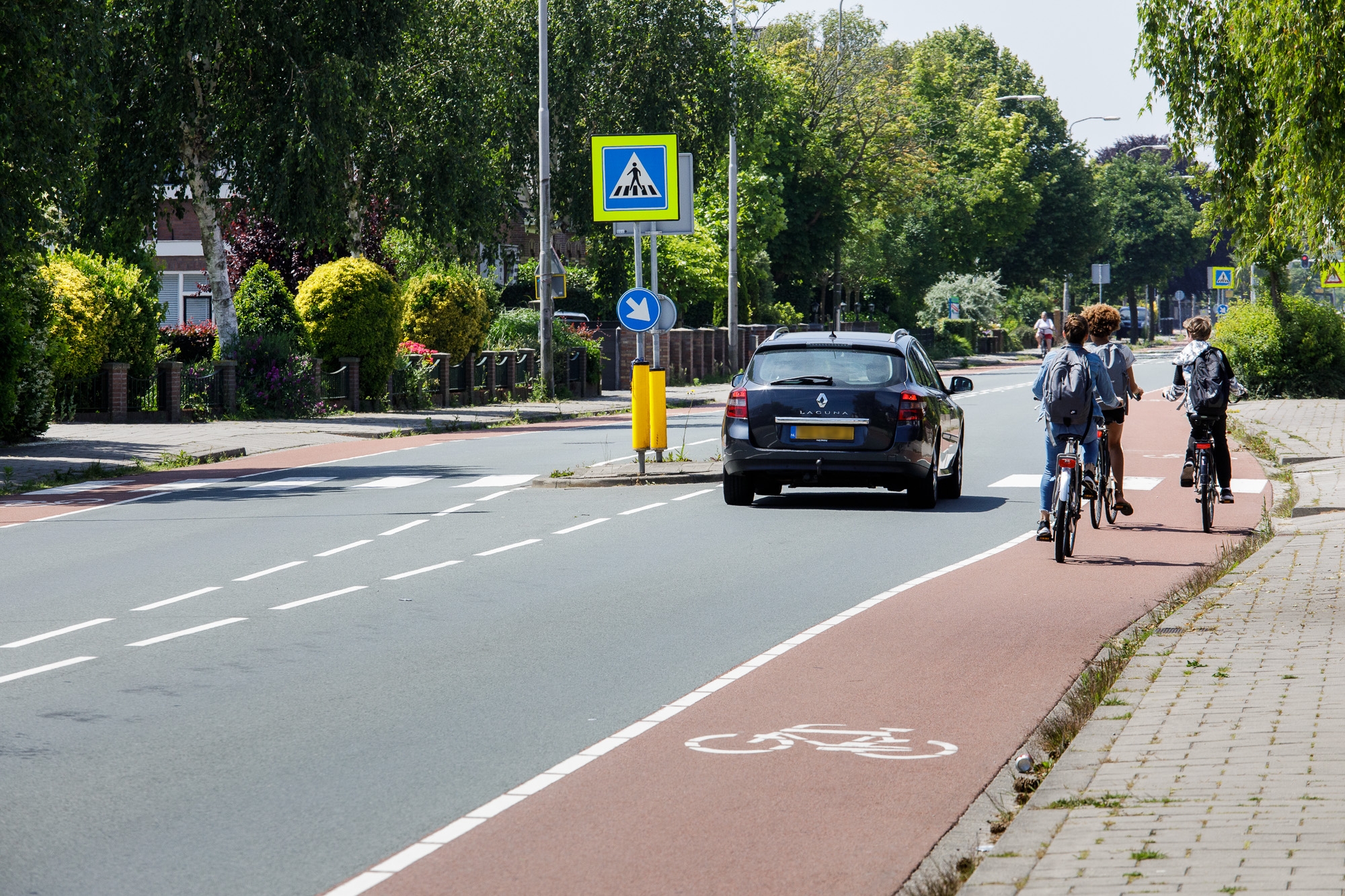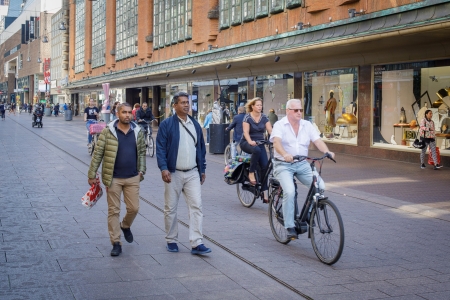Road sections
For pedestrians and cyclists, there are physically separate footpaths and bicycle tracks. According to the 1990 Traffic Code (RVV 1990), pedestrians should use the pavement or footpath. If both are lacking, they should use the bicycle track or, if that is absent as well, the road shoulder. A pedestrian precinct is an area which should really only accommodate pedestrians and sometimes cyclists. These areas are often located at shopping centres. At designated times of day, trucks are allowed for delivering supplies. Physical barriers and several types of signage may be used [3].
For cyclists, use of bicycle tracks is mandatory. They will only use the carriageway if there is no mandatory bicycle track and they may use a non-mandatory bicycle lane if that is present. A bicycle/moped track is a bicycle track that is also mandatory for mopeds. A bicycle lane, marked by bicycle pictograms, is a part of the carriageway visually separated by continuous or broken lines. Other road users may not stop their vehicles in these lanes (RVV 1990). Road authorities may suggest a bicycle lane by means of lines, but without bicycle pictograms, but this is not covered by traffic regulations and is discouraged [4]. A bicycle street is a road that is designed to combine a through-function for cyclists and a access function for cars [5]. The design is intended to persuade drivers to adjust their behaviour to the presence of cyclists, for example by lowering their speeds. In the Netherlands, there are no specific traffic regulations for road users of bicycle streets.
Pedestrian crossings within road sections
Besides road section infrastructure, there is also infrastructure for pedestrian crossings within road sections (other than intersections). In RVV 1990, zebra crossings are called pedestrian crossings, see the example in Figure 3. Some of them are signalised. For cyclists, priority at crossings is arranged similarly to priority for motorised vehicles, e.g., by shark teeth on the road surface or by traffic lights. In addition, channel and block markings may indicate where pedestrians and cyclists may cross, without the markings assigning priority.
 Figure 3. Example of a zebra crossing (Photograph: Paul Voorham).
Figure 3. Example of a zebra crossing (Photograph: Paul Voorham).
Intersections
The provisions described for pedestrian crossings within road sections may also be applied at intersections and roundabouts. Bicycle lanes/tracks and footpaths/pavements may connect to intersections. A bicycle lane may connect to a ‘bike box’, where cyclists may position themselves ahead of motorised traffic (see Figure 4). Signalised intersections may have pedestrian and cyclist traffic lights. Pedestrians and cyclists may cross when the lights are green for them and red for other traffic, i.e. exclusive traffic signal phasing. Yet, some signalised intersections have concurrent signal phasing, when the lights are green not only for vehicles taking a left or right turn, but also for pedestrians (and/or cyclists) crossing the road the vehicles turn into.
 Figure 4. Example of a bike box (Photograph: Paul Schepers).
Figure 4. Example of a bike box (Photograph: Paul Schepers).
